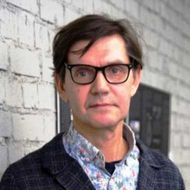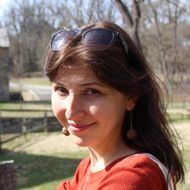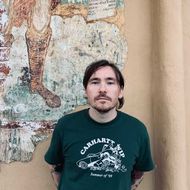Students from Russia, Germany, China, Turkey, and Brazil Take Part in Historical Intensive Course at HSE University–St Petersburg
From pre-Petrine times to Soviet neighbourhoods, students from Russia, Brazil, Turkey, China, and Germany spent three weeks studying the multi-layered history of St Petersburg not just in the classroom but also on the city streets. The participants of the International Summer School at HSE University–St Petersburg visited imperial residences and Soviet communal apartments, Orthodox and Lutheran churches, the historical centre and residential areas.

The intensive course covered the history of St Petersburg from its foundation to modern times. Professors of the School of Arts and Humanities at HSE University–St Petersburg held lectures, workshops, and seminars about various epochs—imperial heritage, the Soviet period, the religious landscape—and organised tours to places connected to the February and October revolutions. The participants of the Summer School explored the city centre and visited some remote and less-obvious landmarks which remain important for the modern historical memory of the region. The studies finished with presentations of group projects. The intensive course gathered students from Russia, Brazil, Turkey, China, and Germany.

Adrian Selin
Dean of the School of Arts and Humanities
'The summer course "St Petersburg: The Topography and Legacy of Imperial and Soviet History" is an important educational event with huge potential for development. One of its functions is to maintain a dialogue about the past, to show Russian and international students alike the diversity of approaches to studying history, and highlight a wide range of topics using the example of the classical subject of imperial St Petersburg.
I worked with an international audience that was well-prepared for even such a narrow agenda as the history of (future) St Petersburg in pre-Petrine times, and the use of texts about these epochs in the historical politics of the 18–20th centuries.'

Ekaterina Kalemeneva
Head of the Department of History
'I delivered the class "Leningrad: Making the Socialist City." The students explored how Soviet and socialist cities were different from other forms of urbanism, how the Sovietisation of the Leningrad urban space occurred, and what heritage it left. For me, it was important to show how careful studies of architectural changes, layout, and ideas of standard residential urban space help us to understand social and political changes in the 20th century better.
During the field seminar, we took the course participants on a stroll through the Narva Gate to see firsthand the prototypical socialist neighbourhood of the 1920s–1930s when all the most important elements of new city infrastructure were built in the constructivist style. Using this example, we discussed and compared what type of sociability and what values were formed under the influence of constructivist site development and later neo-classical neighbourhoods built in the late 1930s–early 1950s, as well as typical neighbourhood units of the 1960s. This gives an idea of how urban studies can help us understand changes in the Soviet political project.'
The interdisciplinary format of the school allowed students to immerse themselves not only in the urban environment—one of the excursions covered the religious landscape. The participants visited several churches of various Christian denominations on Nevsky Prospect.

Igor Kuziner
Senior Lecturer at the Department of History
'We talked about the fact that both contemporaries of the Russian Empire and modern historians treated our country as a space of religious tolerance, where members of various religions co-existed at the institutional level. However, this opinion does not take into account lots of identities and groups that happened to be outside this space of religious tolerance—from Orthodox religious dissidents (Old Believers) to those who were thinking about changing their religion up to 1905.'
'This course broadened my horizons and allowed me to feel a connection with the city and its history on a deeper level. In particular, I liked that our classes were often held in the open air: every day, we went on excursions around the city and historical sites. It helped to study the material in a more lively and authentic way than in a classroom. The studies were academically intense and inspiring,' shared Laura Guenther, a student from Germany.
At the end of the course, the students presented their research projects on practices of maintaining historical memory in St Petersburg. These included the evolution of ideas about the Smolny Institute, the influence of the Soviet urban planning on urban practices abroad, as well as which images and symbols are used and reproduced in the urban space of Sennaya Ploshchad.

